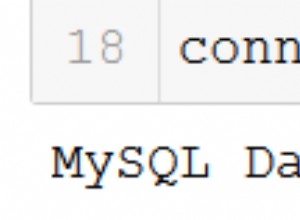Uma abordagem bastante simplista (e semelhante ao que mostra o link do AskTom) é extrair todos os pares de ano/mês e todos os pares de nome/r_grupo e, em seguida, juntá-los:
with data as (
select 1 id, 'A' name, 'fruit' r_group, '2007' year, '04' month, 5 sales from dual union all
select 2 id, 'Z' name, 'fruit' r_group, '2007' year, '04' month, 99 sales from dual union all
select 3 id, 'A' name, 'fruit' r_group, '2008' year, '05' month, 10 sales from dual union all
select 4 id, 'B' name, 'vegetable' r_group, '2008' year, '07' month, 20 sales from dual
)
select a.year, a.month, b.name, b.r_group, nvl(d.sales, 0) as sales
from (select distinct year, month from data) a
cross join (select distinct name, r_group from data) b
left join data d on d.year = a.year and d.month = a.month and d.name = b.name and d.r_group = b.r_group
order by year, month, name, r_group;
YEAR MO N R_GROUP SALES
---- -- - --------- ----------
2007 04 A fruit 5
2007 04 B vegetable 0
2007 04 Z fruit 99
2008 05 A fruit 10
2008 05 B vegetable 0
2008 05 Z fruit 0
2008 07 A fruit 0
2008 07 B vegetable 20
2008 07 Z fruit 0
Mas isso produz mais linhas do que você queria com sua agregação fo de primeiro nível:
YEAR MO N R_GROUP SALES OPENING CLOSING
---- -- - --------- ---------- ---------- ----------
2007 04 A fruit 5 0 5
2007 04 B vegetable 0 0 0
2007 04 Z fruit 99 0 99
2008 05 A fruit 10 5 15
2008 05 B vegetable 0 0 0
2008 05 Z fruit 0 99 99
2008 07 A fruit 0 15 15
2008 07 B vegetable 20 0 20
2008 07 Z fruit 0 99 99
e quando agregado com seu segundo nível (da outra consulta) produziria linhas extras para, digamos, 2007/04/vegetable:
YEAR MO R_GROUP SALES OPENING CLOSING
---- -- --------- ---------- ---------- ----------
2007 04 fruit 104 0 104
2007 04 vegetable 0 0 0
2008 05 fruit 10 104 114
2008 05 vegetable 0 0 0
2008 07 fruit 0 114 114
2008 07 vegetable 20 0 20
que você pode filtrar parcialmente antes de agregar porque todas as colunas intermediárias seriam zero:
with data as (
select 1 id, 'A' name, 'fruit' r_group, '2007' year, '04' month, 5 sales from dual union all
select 2 id, 'Z' name, 'fruit' r_group, '2007' year, '04' month, 99 sales from dual union all
select 3 id, 'A' name, 'fruit' r_group, '2008' year, '05' month, 10 sales from dual union all
select 4 id, 'B' name, 'vegetable' r_group, '2008' year, '07' month, 20 sales from dual
)
select year,
month,
r_group,
sum(sales) sales,
sum(opening) opening,
sum(closing) closing
from (
select t.*,
(sum(sales) over (partition by name, r_group
order by year, month
rows between unbounded preceding and current row
) -sales ) as opening,
sum(sales) over (partition by name, r_group
order by year, month
rows between unbounded preceding and current row
) as closing
from (
select a.year, a.month, b.name, b.r_group, nvl(d.sales, 0) as sales
from (select distinct year, month from data) a
cross join (select distinct name, r_group from data) b
left join data d
on d.year = a.year and d.month = a.month and d.name = b.name and d.r_group = b.r_group
) t
)
where sales != 0 or opening != 0 or closing != 0
group by year, month, r_group
order by year, month;
para obter:
YEAR MO R_GROUP SALES OPENING CLOSING
---- -- --------- ---------- ---------- ----------
2007 04 fruit 104 0 104
2008 05 fruit 10 104 114
2008 07 fruit 0 114 114
2008 07 vegetable 20 0 20
Você pode filtrar ainda mais esse resultado para remover linhas em que o valor de vendas agregado ainda é zero, mas se estiver fazendo isso, o filtro antes a agregação não é mais necessária; mas ainda está meio bagunçado. E não está claro se sua agregação mais externa pode ser modificada para fazer isso.




